-
 Bitcoin
Bitcoin $108,489.6704
1.13% -
 Ethereum
Ethereum $2,502.0528
2.92% -
 Tether USDt
Tether USDt $1.0002
0.00% -
 XRP
XRP $2.1941
0.51% -
 BNB
BNB $655.3375
1.00% -
 Solana
Solana $151.5977
1.27% -
 USDC
USDC $0.9999
0.00% -
 TRON
TRON $0.2768
0.32% -
 Dogecoin
Dogecoin $0.1676
2.86% -
 Cardano
Cardano $0.5675
0.98% -
 Hyperliquid
Hyperliquid $40.6109
7.48% -
 Bitcoin Cash
Bitcoin Cash $500.7746
2.09% -
 Sui
Sui $2.8328
2.03% -
 Chainlink
Chainlink $13.4452
1.26% -
 UNUS SED LEO
UNUS SED LEO $9.1623
0.39% -
 Avalanche
Avalanche $18.2267
2.24% -
 Stellar
Stellar $0.2382
0.00% -
 Toncoin
Toncoin $2.8885
1.68% -
 Shiba Inu
Shiba Inu $0.0...01159
0.91% -
 Litecoin
Litecoin $87.1827
0.88% -
 Hedera
Hedera $0.1511
2.90% -
 Monero
Monero $315.4992
-0.59% -
 Polkadot
Polkadot $3.4663
2.34% -
 Bitget Token
Bitget Token $4.6118
-0.65% -
 Dai
Dai $1.0000
-0.01% -
 Ethena USDe
Ethena USDe $1.0003
0.02% -
 Uniswap
Uniswap $7.2989
4.69% -
 Pepe
Pepe $0.0...01003
5.73% -
 Aave
Aave $275.5616
7.15% -
 Pi
Pi $0.5181
-2.49%
What is a DApp in a cryptocurrency?
dApps, built on blockchain technology, offer enhanced security and censorship resistance compared to traditional apps, but require expertise in blockchain development and careful consideration of smart contract vulnerabilities.
Mar 13, 2025 at 02:30 pm
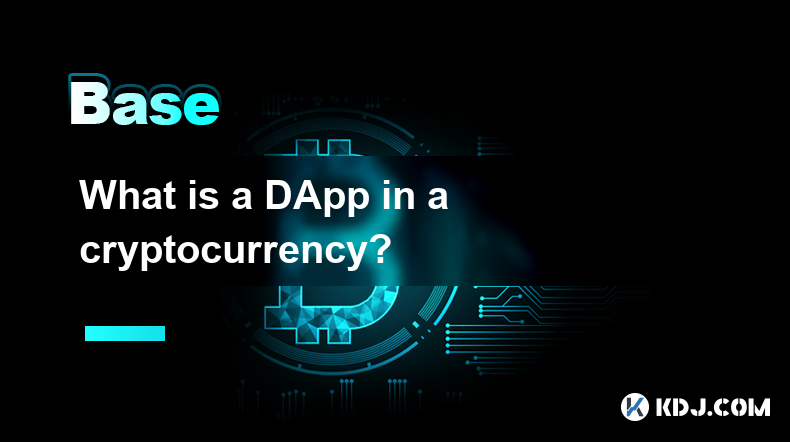
Key Points:
- Decentralized Applications (dApps) are applications built on blockchain technology, distinguishing them from traditional centralized apps.
- dApps leverage the decentralized nature of blockchain for enhanced security, transparency, and censorship resistance.
- Several types of dApps exist, each serving different purposes and utilizing various blockchain functionalities.
- Building and using dApps requires understanding blockchain concepts and utilizing specific development tools.
- Security concerns specific to dApps necessitate careful consideration of smart contract vulnerabilities and potential attack vectors.
What is a DApp in a Cryptocurrency?
A Decentralized Application (dApp) is a software application that runs on a decentralized network, typically a blockchain, rather than a single server controlled by a central authority. Unlike traditional applications controlled by a company, dApps distribute control and data across many nodes in a peer-to-peer network. This fundamental difference offers several advantages, including increased security, transparency, and censorship resistance. The core functionality of a dApp is governed by smart contracts, self-executing contracts with the terms of the agreement directly written into code.
How are dApps different from traditional apps?
The key distinction lies in their architecture and control. Traditional apps rely on centralized servers owned and operated by a single entity. This centralized structure creates vulnerabilities to single points of failure, censorship, and data breaches. In contrast, dApps are built on a distributed network, making them more resilient to attacks and censorship. Data is typically stored across multiple nodes, enhancing data security and availability. Furthermore, dApps often utilize cryptographic methods for enhanced security and user authentication.
What are the types of dApps?
Several categories of dApps exist, each leveraging different aspects of blockchain technology. These include:
- Decentralized Exchanges (DEXs): These platforms allow users to trade cryptocurrencies without relying on a central intermediary.
- Decentralized Finance (DeFi) applications: DeFi encompasses a wide range of financial services built on blockchain, including lending, borrowing, and yield farming.
- Non-Fungible Token (NFT) marketplaces: These platforms facilitate the buying, selling, and trading of NFTs.
- Gaming dApps: These incorporate blockchain technology to create decentralized gaming experiences, often incorporating NFTs for in-game assets.
- Social media dApps: These aim to provide censorship-resistant and user-controlled social media platforms.
How are dApps built?
Building a dApp requires expertise in blockchain development and programming languages such as Solidity (for Ethereum) or Rust (for Polkadot). The process generally involves:
- Designing the dApp's architecture and functionality: This includes defining the smart contracts and user interfaces.
- Writing the smart contracts: Smart contracts are coded to govern the dApp's logic and functionality. Rigorous testing is crucial at this stage.
- Developing the front-end user interface: This allows users to interact with the dApp.
- Deploying the smart contracts to the blockchain: This makes the smart contracts accessible and executable on the network.
- Testing and debugging: Thorough testing is critical to identify and resolve potential vulnerabilities.
What are the security considerations for dApps?
Security is paramount in dApp development. Vulnerabilities in smart contracts can lead to significant financial losses or data breaches. Key security considerations include:
- Smart contract audits: Independent audits by security experts help identify and mitigate potential vulnerabilities.
- Input validation: Robust input validation prevents malicious inputs from exploiting vulnerabilities.
- Access control: Implementing appropriate access control mechanisms prevents unauthorized access and manipulation.
- Regular updates and patching: Addressing vulnerabilities promptly is crucial to maintaining the security of the dApp.
What are the benefits of using dApps?
The decentralized nature of dApps offers several advantages:
- Increased security: The distributed nature of dApps makes them more resistant to attacks and censorship.
- Transparency: All transactions and data are recorded on the blockchain, enhancing transparency and accountability.
- Censorship resistance: dApps are less susceptible to censorship compared to centralized applications.
- Improved user control: Users have greater control over their data and assets.
What are the limitations of dApps?
Despite the advantages, dApps also face certain limitations:
- Scalability: Some blockchains may struggle to handle a large number of transactions, impacting dApp performance.
- Usability: The user experience of some dApps can be complex and less intuitive than traditional apps.
- Regulation: The regulatory landscape surrounding dApps is still evolving, creating uncertainty.
- Development complexity: Building dApps requires specialized skills and knowledge.
Common Questions and Answers:
Q: Are all dApps built on Ethereum? A: No, while Ethereum is a popular platform for dApp development, many other blockchains support dApp creation, including Solana, Polkadot, and Cosmos.
Q: Are dApps always secure? A: No, dApps can be vulnerable to security flaws if not properly designed and audited. Thorough testing and security audits are crucial.
Q: How do I interact with a dApp? A: You typically interact with a dApp through a web browser or a dedicated application, often requiring a cryptocurrency wallet to manage your assets.
Q: What are the future prospects of dApps? A: The future of dApps is promising, with ongoing development and improvements in scalability, usability, and security. The increasing adoption of blockchain technology is expected to drive further growth in the dApp ecosystem.
Q: Can I create my own dApp? A: Yes, but it requires significant technical expertise in blockchain development and programming. It's a complex undertaking requiring substantial knowledge and resources.
Disclaimer:info@kdj.com
The information provided is not trading advice. kdj.com does not assume any responsibility for any investments made based on the information provided in this article. Cryptocurrencies are highly volatile and it is highly recommended that you invest with caution after thorough research!
If you believe that the content used on this website infringes your copyright, please contact us immediately (info@kdj.com) and we will delete it promptly.
- Ripple, Stablecoin, Adoption: RLUSD Leading the Charge
- 2025-06-30 14:30:12
- Bitcoin ETF, IBIT, and the Bull Flag: Is $144,000 on the Horizon?
- 2025-06-30 14:50:12
- Bitcoin, Passive Income, and a Bull Raise: Riding the Crypto Wave
- 2025-06-30 14:30:12
- Bitcoin, Personal Loans, and Omega 88: A New Era in Lending?
- 2025-06-30 15:09:14
- Saylor's Strategy: How MicroStrategy's Bitcoin Bet is Reshaping Finance
- 2025-06-30 14:52:14
- Metaplanet's Bitcoin Blitz: From Zero to Hero in the Corporate Treasury Race
- 2025-06-30 15:10:54
Related knowledge
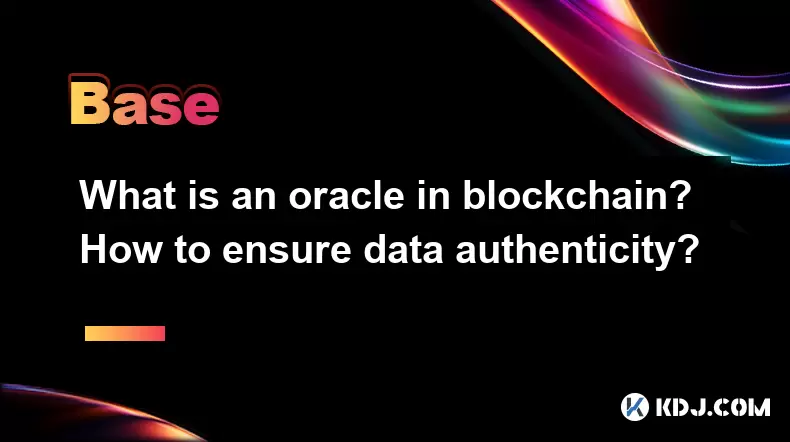
What is an oracle in blockchain? How to ensure data authenticity?
Jun 19,2025 at 08:49pm
Understanding the Role of an Oracle in BlockchainIn the context of blockchain technology, an oracle serves as a bridge between the blockchain and external data sources. While blockchains are inherently secure and decentralized, they cannot access real-world information on their own. Oracles enable smart contracts to interact with off-chain data such as ...
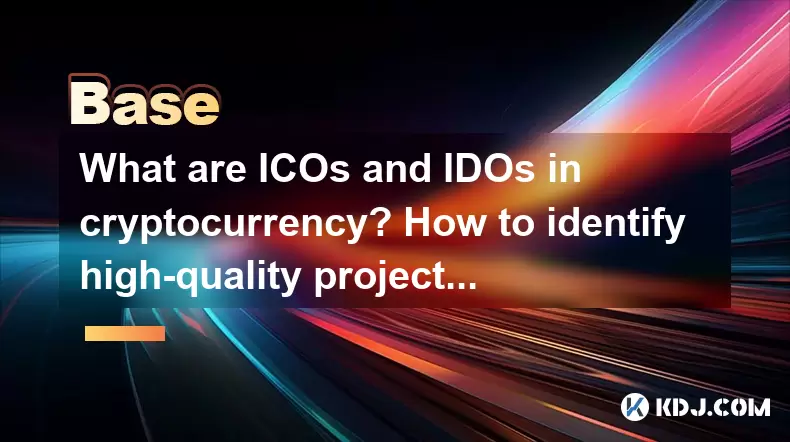
What are ICOs and IDOs in cryptocurrency? How to identify high-quality projects?
Jun 22,2025 at 11:49am
Understanding ICOs in CryptocurrencyInitial Coin Offerings (ICOs) are fundraising mechanisms used by cryptocurrency startups to raise capital for their projects. In an ICO, a company creates and sells its own tokens to investors in exchange for established cryptocurrencies like Bitcoin or Ethereum. The process typically involves the release of a whitepa...
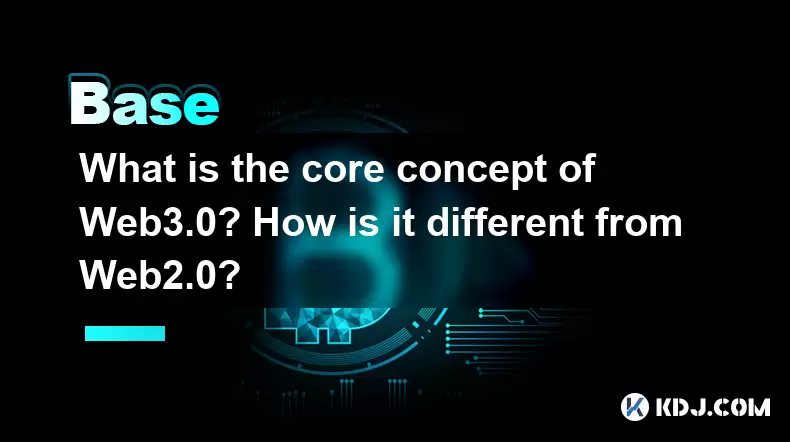
What is the core concept of Web3.0? How is it different from Web2.0?
Jun 21,2025 at 05:56pm
Decentralization as the Foundation of Web3.0The core concept of Web3.0 revolves around decentralization, which fundamentally challenges the centralized architecture of Web2.0. In Web3.0, control and ownership are distributed across a network rather than being held by a central authority or corporation. This is achieved primarily through blockchain techn...
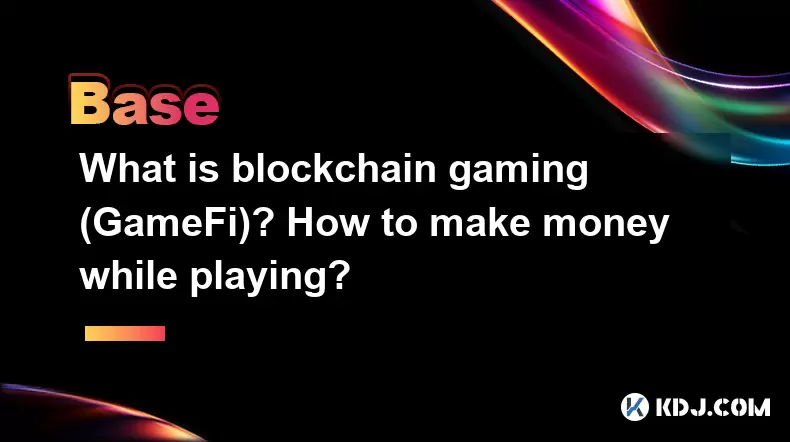
What is blockchain gaming (GameFi)? How to make money while playing?
Jun 20,2025 at 07:56am
Understanding Blockchain Gaming (GameFi)Blockchain gaming, often referred to as GameFi, is a fusion of blockchain technology and video games. It enables players to own in-game assets through non-fungible tokens (NFTs) and earn rewards via cryptocurrencies or token-based systems. Unlike traditional games where items are controlled by centralized develope...
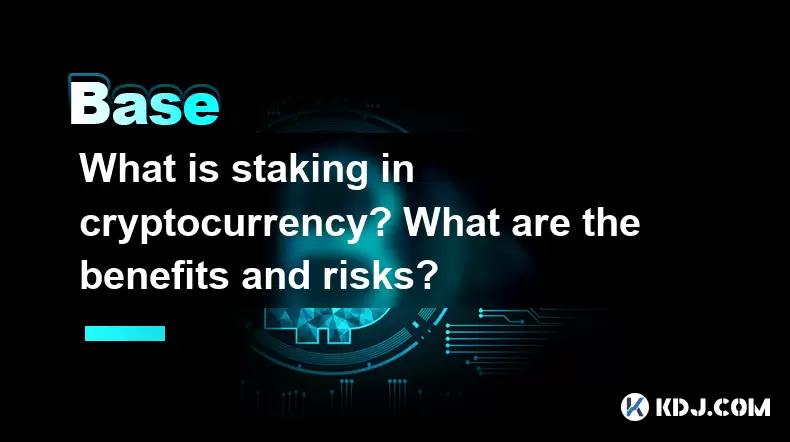
What is staking in cryptocurrency? What are the benefits and risks?
Jun 22,2025 at 10:01am
Understanding the Concept of Staking in CryptocurrencyStaking in cryptocurrency refers to the process of actively participating in transaction validation on a blockchain network that uses a Proof-of-Stake (PoS) consensus mechanism. Instead of miners competing to solve complex mathematical puzzles as in Proof-of-Work systems like Bitcoin, PoS blockchains...
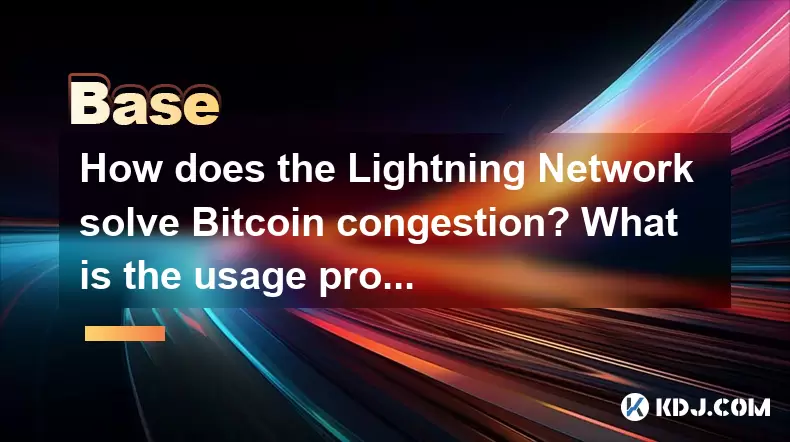
How does the Lightning Network solve Bitcoin congestion? What is the usage process?
Jun 23,2025 at 06:21pm
Understanding Bitcoin Network CongestionBitcoin, as a decentralized digital currency, operates on a blockchain that records every transaction in a public ledger. Each block has a limited size, typically 1 megabyte, which allows for only a certain number of transactions per second (TPS). When the number of transactions increases, the network becomes cong...

What is an oracle in blockchain? How to ensure data authenticity?
Jun 19,2025 at 08:49pm
Understanding the Role of an Oracle in BlockchainIn the context of blockchain technology, an oracle serves as a bridge between the blockchain and external data sources. While blockchains are inherently secure and decentralized, they cannot access real-world information on their own. Oracles enable smart contracts to interact with off-chain data such as ...

What are ICOs and IDOs in cryptocurrency? How to identify high-quality projects?
Jun 22,2025 at 11:49am
Understanding ICOs in CryptocurrencyInitial Coin Offerings (ICOs) are fundraising mechanisms used by cryptocurrency startups to raise capital for their projects. In an ICO, a company creates and sells its own tokens to investors in exchange for established cryptocurrencies like Bitcoin or Ethereum. The process typically involves the release of a whitepa...

What is the core concept of Web3.0? How is it different from Web2.0?
Jun 21,2025 at 05:56pm
Decentralization as the Foundation of Web3.0The core concept of Web3.0 revolves around decentralization, which fundamentally challenges the centralized architecture of Web2.0. In Web3.0, control and ownership are distributed across a network rather than being held by a central authority or corporation. This is achieved primarily through blockchain techn...

What is blockchain gaming (GameFi)? How to make money while playing?
Jun 20,2025 at 07:56am
Understanding Blockchain Gaming (GameFi)Blockchain gaming, often referred to as GameFi, is a fusion of blockchain technology and video games. It enables players to own in-game assets through non-fungible tokens (NFTs) and earn rewards via cryptocurrencies or token-based systems. Unlike traditional games where items are controlled by centralized develope...

What is staking in cryptocurrency? What are the benefits and risks?
Jun 22,2025 at 10:01am
Understanding the Concept of Staking in CryptocurrencyStaking in cryptocurrency refers to the process of actively participating in transaction validation on a blockchain network that uses a Proof-of-Stake (PoS) consensus mechanism. Instead of miners competing to solve complex mathematical puzzles as in Proof-of-Work systems like Bitcoin, PoS blockchains...

How does the Lightning Network solve Bitcoin congestion? What is the usage process?
Jun 23,2025 at 06:21pm
Understanding Bitcoin Network CongestionBitcoin, as a decentralized digital currency, operates on a blockchain that records every transaction in a public ledger. Each block has a limited size, typically 1 megabyte, which allows for only a certain number of transactions per second (TPS). When the number of transactions increases, the network becomes cong...
See all articles

























































































